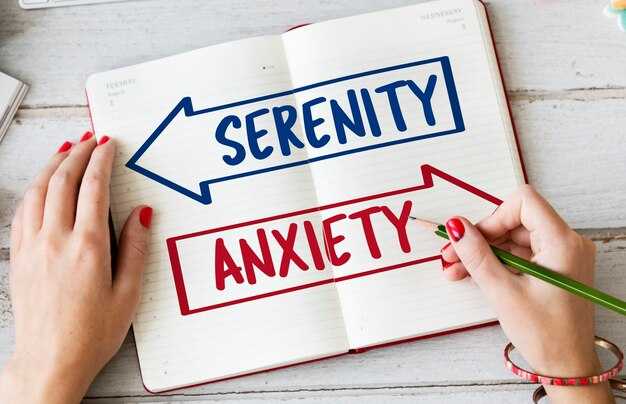If you are one of the many people carrying the lasting effects of childhood abuse or neglect, I want you to know that you’ve likely had to struggle far harder to achieve things that others take for granted. This pattern is known as complex PTSD (C-PTSD) — a condition that often results from prolonged, intense stress in childhood. You might already recognize it in yourself, be learning about it, or be actively working toward recovery. For most people with C-PTSD, progress doesn’t feel steady — it’s fitful and starts and stops. When healing stalls, it can leave you feeling trapped and worried that joy, love, fulfillment, or financial stability will always be out of reach. Those fears are understandable, but they are not inevitable. Life improves when you discover an approach to recovery that actually helps you.
At the start of your healing journey it’s hard to know which methods will help. But giving up without trying is how people stay stuck. Maybe you experimented with a healing strategy only halfway — I get messages from students saying, “I sort of tried the daily practice a few times, but it didn’t work.” Well, of course it won’t work if it’s not practiced consistently. Or you may already understand what helps you and what steps you need to take, yet you haven’t found the inner drive to keep going. The purpose of this message is to encourage you to take your healing seriously and commit to it. Below I outline ten practical steps you can take right now if you want to move forward. Not every suggestion will suit everyone, but these are the practices I use and teach in my courses and coaching. After you read them, choose one or two that feel most urgent and actionable for you and begin today.
Pick the changes that, if left unaddressed, cause you the most pain, then ask which of those are doable now. Aim for one or two wins you can achieve relatively quickly — wins that will build confidence and prove that change is possible. You probably already have a couple of such changes in mind. Choosing a goal that is both meaningful and achievable is a smart strategy to build momentum.
1) Learn what complex PTSD really is. Don’t rely only on internet snippets, hearsay, or labels thrown at those who hurt you. Understanding what’s happening in your brain and nervous system — emotional dysregulation, physiological dysregulation, and how those affect your life — is essential. Only recently has the medical community begun to acknowledge that C-PTSD is an injury to the brain and nervous system. Many clinicians still don’t fully understand it, so educate yourself so you can make informed choices about your healing.
2) Be willing to notice problems in your life that have nothing to do with trauma. C-PTSD can make focus, consistency, empathy, presence, and relationships harder, and it can harm your health. But everyone also has ordinary human flaws that aren’t caused exclusively by trauma — things like chronic lateness or a cluttered kitchen that makes you ashamed when guests come over. I love identifying those “low-hanging fruit” problems because they’re often simpler to fix and provide quick wins without waiting for deep brain healing.
3) Prepare to move your painful memories out of “present-time” reactivity. C-PTSD can cause memories to activate your physiology as if the trauma is happening now — adrenaline surges, racing heart, scattered thinking — which leads to looping, intrusive thoughts. What you want are ordinary memories: memories you can recall without them hijacking your body. Be open to the idea that you don’t always have to react to the past. I teach a method called the daily practice that helps calm reactivity by naming and releasing fearful and resentful thoughts. It’s free and can be learned in under an hour; there are additional videos if you want to go deeper. If fear or resentment feels like a primitive form of protection for you, try surrendering it gradually — a little at a time — and notice whether releasing it truly leaves you vulnerable or, instead, makes you clearer and more empowered.
(If you enroll in the course I mention, there are twice-monthly live Zoom calls where we practice techniques together and people find supportive friends on the same path.)
4) Stop trying to get other people to stop triggering you. Nearly everyone with C-PTSD is highly triggered by social interactions — that’s why connection often feels so painful, and why many of us isolate. It’s tempting to believe that if other people would just change their behavior, you’d be fine. But even well-meaning people will usually be unable to eliminate your triggers because the primary work is internal. You’ll gain more control and empowerment by learning how to calm your own triggers than by trying to make the world safe for you. As you learn to calm your reactivity, you’ll develop discernment — the ability to tell whether someone is actually harmful or whether your past trauma is lighting you up. Discernment lets you make clearer choices: when to step away, when to repair a relationship, and when to open your heart. When you can re-regulate your nervous system, you become more flexible, less hyper-specific about who you can tolerate, and better able to form healthy connections.
5) If you want to accelerate healing, stop labeling and trash-talking the people you choose to have in your life. It’s common to slap on tags like “narcissist” or “toxic,” but focusing on the label distracts you from the more useful work: noticing how you get tense and dysregulated around certain people and learning to manage your responses. That’s where you have influence. You always have a right to choose who you let close, but when you’re triggered, instead of assigning a permanent pathology to someone else, focus on whether you can regulate yourself enough to engage honestly about what’s happening. Recovering people tend to both accept good people into their lives and step away from those who harm them more quickly. Working on yourself remains your most powerful tool.
6) Stop clinging to relationships that make you miserable. Staying stuck in abusive, draining, or chronically unhappy relationships will block your healing. I understand that obligations exist — dependent children, caregiving responsibilities — and those situations may require careful planning, support, and resources to change. Still, keeping yourself in relationships that constantly deplete you will prevent growth. If you can move away from those situations, do so with whatever help you can access.
7) The same goes for jobs. Don’t stay in work that is making you miserable unless you truly must for survival. Sometimes we use an unbearable job as a substitute for facing other painful parts of life. I stayed with a terrible boss for ten years because the job was my security as a single mother, even though it made me unhappy. When external circumstances forced a change, it opened a path to something better. If you can realistically leave or change your job, consider whether your misery at work is protecting you from confronting personal issues. Success rarely comes to those who don’t try; trying matters.
8) Let go of the belief that you magically attract the worst people. I hear “I attract narcissists” a lot. The issue isn’t some supernatural magnetism but rather who you are drawn to, tolerate, or bond with. Often it’s less about being sought out by harmful people and more about not recognizing red flags, tolerating bad behavior, or attaching too quickly. You are the gatekeeper of who enters your life. Strengthen your boundaries and your “red flag detector” — that’s essential for protecting your recovery.
9) If you struggle with addiction, make recovery the top priority. Substances and behaviors used to numb pain — alcohol, drugs, food, pornography, compulsive spending — will block healing. C-PTSD makes the temptation to escape especially strong, but healing requires learning to experience life’s ups and downs and to be present for them without fleeing. When you have reliable tools to calm and comfort yourself — ways to re-regulate — you’ll find addictive urges easier to resist. Recovery gives you the freedom to face what life brings and to cope well.
10) Do a practical thought exercise: ask yourself, “If I truly had to solve this problem, what are ten things I could do?” I use this strategy often. You likely already hold many possible solutions inside you; you just might lack the energy, focus, or urgency to act. List ten actions — you don’t need to do them all, but seeing them on paper brings them into awareness. Read that list regularly so the actions are always on your radar.
Today I felt anger about how little current mental health systems understand or treat C-PTSD. Many providers still don’t recognize it as distinct from depression, general anxiety, ADHD, or borderline personality disorder. There are excellent books that describe the patient’s experience — for example, Bessel van der Kolk’s The Body Keeps the Score and Pete Walker’s Complex PTSD: From Surviving to Thriving — and for many people those accounts are transformative because they finally make sense of what they’ve lived through. It’s distressing to see people suffering under care who have never been told about C-PTSD or offered methods that target dysregulation directly. Too often treatment is limited to talk therapy or medication, which don’t reliably address the core neurological and physiological dysregulation of C-PTSD. For many people, practical self-managed techniques that help downregulate the nervous system should be a first-line approach, especially since access to trauma-informed care is limited and costly for most.
I’ve created free tools (the daily practice) and resources that teach simple techniques to calm reactivity, and thousands of people have found these helpful. I won’t claim they’re a cure-all, but having tools at hand to self-soothe is vital because you can’t wait for “Tuesday at 11” while a trigger is taking you under. Talking about the past can give validation, but repeatedly retelling trauma often keeps the nervous system activated rather than resolving it. Recovery requires building the ability to notice dysregulation and re-regulate quickly so you can process information, reason, and make safer choices.
When someone is physiologically dysregulated, their prefrontal cortex — the part that reasons — can go dim, while emotion-driven regions take over. That’s why people with C-PTSD often make decisions that seem baffling to others: they aren’t “stupid,” they are responding from an injured nervous system. Dysregulation can look like memory slips, numbness, losing track of tasks, or feeling disoriented. It’s not just emotional reactivity that people see from the outside; it’s neurological. Re-regulation is the foundation that makes all other therapeutic steps possible — whether that’s somatic work, therapy, medication, recovery groups, or skill-building.
I was angry today because a person I spoke with on a group coaching call had been depressed for four years, heavily medicated and in therapy, yet had never been told about complex PTSD. People can suffer for a long time inside systems that don’t know how to help them effectively. I believe everyone should be the sovereign of their own healing: you have a right to learn, to try methods that help you, and to make informed choices. Clinicians sometimes object when people without formal credentials share what worked for them, but lived experience and disciplined self-study have value. Many of us have become our own clinicians out of necessity, learning what calms our nervous systems and what helps us function.
Part of the problem is that mental health care often treats trauma as if it were just a symptom category rather than a predictable, measurable condition with physiological consequences. Trauma in childhood correlates strongly with higher rates of chronic illnesses — heart disease, diabetes, autoimmune disorders, migraines, sleep problems, and more. When trauma is widespread and untreated, it becomes one of the most costly drivers of poor health. Yet treatment funding and clinical approaches often lag behind what research and patient experience point to — namely, that regulating the nervous system and developing practical self-care tools should be prioritized.
Therapy and medication have places in care, and in some cases medical supervision is necessary. But for many people with C-PTSD, the most transformative work is the daily learning to notice dysregulation and bring yourself back into balance. Having reliable strategies for calming states of overwhelm makes learning, relationships, and long-term change possible. When you are chronically medicated or numbed, it can impede the process of learning to re-regulate, though there are times medication is needed to stabilize someone enough to begin other work.
Healing also requires facing and changing self-defeating behaviors. Too often past trauma provides an easy scapegoat for ongoing patterns that sabotage recovery: isolation, clinging to painful relationships, staying in jobs that destroy you, rage outbursts, or addictive behaviors. Those patterns are common with C-PTSD and understandable, but they are also changeable. Becoming aware of how you undermine yourself is crucial because self-sabotage is one of the biggest obstacles to recovery.
If you want to stop getting in your own way, start here:
– Stop isolating. Whether you hide out or stay superficially available while secretly avoiding commitment, isolation prevents healing. You need other people to practice connection, to receive feedback, and to rebuild trust. If social contact feels unsafe, titrate it — take tiny steps and see how you do. Build capacity slowly while learning ways to calm triggers.
– Stop staying stuck in sad stories. There is a place for telling your history, but when your past dominates your identity and keeps you absent in the present, it becomes a barrier. Aim to let your story inform you without defining all of you. Start to shift attention to building a life you want now — work, relationships, meaning.
– Stop exploding with angry outbursts. It’s natural to feel anger about what happened to you, but lashing out damages relationships and keeps you stuck. Strategies like venting or striking pillows often intensify anger. Use your energy to create a good life rather than letting anger destroy opportunities.
– Stop staying in abusive or draining relationships. Remaining in relationships that periodically or constantly harm you undermines integrity and stalls healing. When you know something is killing you emotionally, find whatever courage and support you can to get out, or at least protect yourself more firmly.
– Stop running away from challenges. Avoiding opportunities to grow because you fear dysregulation keeps you small. Growth requires risk, and the only way to tolerate the risk is to have reliable ways to calm yourself when things go wrong. With re-regulation skills and supportive people, you can afford to try and learn.
Toxic relationships can become like addictions: you know they’re harmful yet you keep returning to them. Here’s a real example from a person I’ll call Martin, who describes a relationship that spiraled into confusion and an ongoing pull to return despite clear red flags.
About a year ago I met someone I’ll call Angela. Our relationship ignited quickly and intensely. We talked about the future, collaborated on plans, messaged constantly, and within three months discussed business ventures and possibly living together. Then things flipped during a trip. She started describing herself as withdrawing and sabotaging the relationship and said I’d be more hurt than she would be. Shortly after I returned home she told me she didn’t want to be in a relationship anymore and said she wasn’t “relationship material.” She denied we were breaking up at first, and then the dynamic became unstable: cold, distant communication alternating with bursts of intimacy and proclamations of love. She would put photos of us online and then remove them; later deny she had done so. She talked about avoidant attachment and apologized, asking me to try again. I kept taking her back in hopes of working things through.
The pattern continued. When I tried to distance myself she’d call, send playlists, or promise intimacy, then flip back to coldness. At one point she said she’d been keeping a journal she would share, but she never did. I tried to set clear boundaries and asked for no contact so I could heal and reconnect to myself. She respected that initially, then sent messages pleading for compassion. When I didn’t respond, her tactics moved from guilt to anger to public smears on social media. After we blocked each other, months later I sent a calm letter explaining my side; she acknowledged it and later said she wouldn’t answer it. Still, she keeps trying to draw me back, and I find myself tempted to reconnect. It’s like an alcoholic yearning for one drink — I know if I engage I’ll be pulled back into the same cycle. I miss the person I felt like before meeting her, and I don’t know whether I’m grieving the woman I thought she was, the relationship I imagined we had, or the version of myself that felt steady and whole. I want to heal and be free so I can meet someone healthy, but I don’t know how to stop getting pulled back into this pattern.
This story is a familiar script for many: intense love-bombing, rapid attachment, then withdrawal and manipulation that creates a traumatic bond. If you recognize this dynamic, you don’t have to stay stuck. Build tools to calm your nervous system, strengthen boundaries, and lean on supportive people while you rebuild your sense of self.
In closing, healing complex PTSD is largely about learning to notice dysregulation, re-regulate your nervous system, stop self-sabotage, and take practical actions that move your life in a better direction. Educate yourself, find reliable daily practices to calm your reactivity, get help for addictions if they exist, tighten your boundaries, and choose one or two actionable changes you can make now. You are capable of growing beyond what your past created. With steady effort, support, and practical tools, you can reclaim your agency, build healthier relationships, and create a life shaped by your own choices rather than your trauma-driven reactions.
This is a difficult letter to read — it actually saps my energy just going through it, and I suspect that may mirror how this whole situation feels to you, Martin. It can be so hard to step away because it seems like something of your vitality was taken by this woman, and you keep hoping to somehow reclaim it. Let’s unpack what you shared. About a year ago you met a woman you call Angela and things escalated rapidly. For people who experienced childhood traumas — and you’ve described having your own separate history — moving too fast is one of the clearest ways to trigger old wounds and end up in a relationship that dredges up everything. I always emphasize slowing things down, but often by the time someone writes in, they’re already entangled in a situation that stirred up the past. You jumped in quickly; it was intense; you broke up months ago, yet the pain persists. The relationship felt solid only for roughly three months, and you suspect you became trauma bonded. That seems accurate to me. There are unmistakable signs of emotional abuse and hints of narcissistic features — whether or not we label a diagnosis, the behaviors are present. Before meeting her you had a clear idea of the partnership you wanted: someone to grow with you. That awareness was new for you; previously you’d taken a more laissez-faire “see how it goes” approach to dating, which is common among people with complex trauma. Reading your letter, a recurring pattern emerges: you gave away your agency and let your future be determined by another person. There’s a fog of denial — almost like you don’t fully accept that you are the one who makes choices. Instead of setting a course, you waited to see how she felt. When someone surrenders their power like that, it’s an extremely exposed position. People often say, “I attract narcissists,” and while the mix of people we encounter matters, what truly dictates outcomes is who we commit to. Selfish partners who use others to fill their gaps without genuinely caring for them can only do that when they find someone willing to wait, someone without firm boundaries or standards. You did have standards, but they wavered around her — partially because she must have been magnetic: attractive, talented, fun, or charming. That allure, combined with your lowered defenses, created a fog where you felt defenseless. In previous relationships you didn’t have a clear goal; also, you’re a divorced father of two, which raises the stakes. If you’re in a healthy partnership, it models stability for your children, so it’s good that this relationship won’t influence them further. Your prior relationships had been mostly decent, even if they didn’t last. With Angela you began knowing what you wanted and she initially seemed aligned — she talked about a big future and growing together. Then you became enmeshed: constant texting, video chats, planning to move in together, always imagining the future. When two people shut out the outside world and orbit only one another, even the most genuine feelings can become fragile. That kind of intensity, especially combined with attachment wounds or a history of neglect, opens the door to fantasy and future-faking — engaging with an imagined version of the person rather than the real, imperfect human in front of you. It appears she might have been doing the same. Future talk can be useful to clarify essential facts (e.g., whether you want marriage or whether you’d be a stepparent), but when you have attachment injuries, painting elaborate future pictures early on is invitation to vulnerability and delusion. People who leap to commitments without testing compatibility often can’t build the steady friendship and mutual commitment that lead to reliable, long-term partnerships. By the time many of us are past our forties, moving in together is a major, sometimes irreversible, choice. It entwines home, finances, social life — and when you’re already carrying a fear of abandonment, mixing all that with someone unreliable is perilous. You may cling to a bad relationship far longer than you should or risk losing everything if they leave. What I hope for you is a slower, more deliberate dating process: explore several people, take time to learn who truly fits, and consider a year or more — commonly 18 months to three years — before betting your life on someone. That is even more important when children are involved, since what’s best for them is usually best for you too. The situation shifted dramatically at a festival: overnight things changed. One minute you were planning to move in, the next she hinted she might be pulling away. When you asked if you were broken up she denied it — “What are you talking about? We’re moving in together” — which should have set off alarms. After you returned home she called to say she didn’t want the relationship anymore; she claimed she wasn’t “relationship material.” Often statements like that hide something else — perhaps she’d met someone else — but the bottom line is that when someone intends to be with you, they tend to act in ways that avoid risking you. Instead, she created confusion. When you probed about the breakup she accused you of “linear thinking,” a dismissive rebuke that can feel like ideological or spiritual gaslighting: minimizing your reasonable question — “Are we broken up?” — by labeling it as too rigid. Then she disappeared to her family’s place and you adopted your old “let’s see how it goes” posture again, which is where you handed over your aim. If you had been more healed you might have said, “I’m done with this,” because her pattern of hot-and-cold behavior and inconsistent communication should have been the cue to end it. But instead you stayed, allowing yourself to be tossed around by her whims — whims that consistently seemed driven by what was convenient for her, not by concern for your feelings. That pattern likely echoes childhood dynamics when your needs weren’t prioritized. You get angry at yourself now — a healthy response — because the uncertainty stretched on through the summer: not broken up, but not truly together, which is a very convenient gray area for her. Her demeanor cooled drastically from the initial three months; whenever you tried to pull back she’d reel you back in, keeping you in a narrow spot where she could use you when it suited her. It looks a lot like keeping you as a backup while remaining available to others. You recognized it wasn’t healthy, and you’re right. When you distanced, she would love-bomb you — guilt trips, apologies, promises to change — and you took her back, hoping that acknowledgment plus intention to heal would translate into real change. That optimism is understandable. People can promise treatment or growth, but even sincere intent rarely makes someone instantly relationship-ready if the underlying behaviors are deeply ingrained. This is true whether the problem is addiction, chronic inconsideration, or repeated deception. Trauma bonding explains why you stayed: intermittent reinforcement — “I love you,” then silence, then love again — hooks the brain like an addiction. You begin craving the next hit of attention, affection, or reassurance, and obsession can build. A concrete example you gave illustrates the chaos: at the festival she posted several photos of you together on Facebook without asking — something intimate in a new relationship that should be discussed first. Then, as she alternated between warm and cold, she repeatedly removed and reposted those images, all without communicating with you. When you asked why she removed them she claimed the pictures implied you were in a relationship when you weren’t — though at first she’d posted them. That behavior suggests she wanted to appear unattached to others while keeping you available; the way she oscillated demonstrates how little your feelings mattered to her. Denying she’d put the photos up or taken them down is classic self-centeredness; it’s another form of gaslighting. The ongoing back-and-forth wore you down and left you confused, and that pattern continued for months. You admit you enabled her to some degree: when you pulled away she’d send a playlist of love songs, or promise to share an “uninhibited” journal she began while away — a manipulative bait that never came to fruition. Reassuring messages, seductive promises, and then silence — it all functioned like a hook in your mind. She once blamed her behavior on being avoidant, but the way she swung from intense closeness to cruel distance doesn’t fit pure avoidance; it looks like something more volatile. Saying you are “the love of my life” and “I want to heal and grow together” were the words that pulled you back because they matched your own longings. I’ve seen similar dynamics where people say they’ll go to treatment or work on issues, and that can create hope, but real, sustained change takes a lot of time and consistent work. The description you’ve given — emotional abuse, narcissistic tendencies, trauma bonding — aligns with what you suspected, and your awareness of it is important. Validation of that perception can sometimes be the first step toward letting that person go. So: time to “wash that person out of your hair.” You told her you needed time alone and thought you had been clear, but clarity matters a great deal here. Saying “the word came up” or nodding when she asked if you were breaking up is ambiguous; decisiveness is a tool you can use to protect yourself. When you request no contact, frame it as a clear declaration: it’s not something you ask permission for. Instead, make a firm boundary and enforce it. Once you told her you needed space, she immediately sent a selfie the next day about a new job and you complimented her. That’s another clue: you responded, keeping a channel open, and complimented her in a dynamic that often reflects a codependent-narcissist pattern. You then begged for no contact rather than enforcing it — “please” instead of “this is no contact.” If you truly mean it, block the person; if necessary, pursue legal measures. The pattern continued: she waited a couple of days after you requested no contact and then texted, “I’ll wait for you to contact me,” followed by a stream of pleading emojis and incessant messages, calls, and emotional manipulation — “I’m trembling, please have compassion” — all classic tactics to lure you back. She asked to meet for “closure,” which, in contexts like this, is often a red flag. “Closure” can be a legitimate need in some very serious, unclear endings (divorce, long engagements), but in many manipulative breakups it’s a pretext to reopen the emotional exchange and pull someone back in. You describe moving from guilt to anger to rage, which is a predictable trajectory when someone refuses to stop trying every tactic to reel you in. At a point she escalated to smearing you on Facebook — an abusive and public form of retaliation — and you sensibly blocked her. But then, after a couple of months, you relapsed and sent her a letter explaining your timeline. That was a misstep; when someone has been unstable and abusive, reaching out to “explain” rarely helps. It gives them fresh material to manipulate and a new way to hook you. This is like early sobriety in addiction: exposure to triggers increases risk of relapse. Her responses were designed to prolong the uncertainty — she delayed answering, she called only to tell you she wouldn’t answer the letter, which in itself was another hook dressed up as boundary. Later she resumed texting, pleading for compassion and insisting you be there as a “friend,” trying yet again to blur lines. You confess the urge to respond is powerful, and that’s exactly how these tactics function: they provoke the same obsessive pull as an addictive substance. Staying away requires eliminating the trigger; for you, that means strict no contact. Healing will demand structural support — avoid places, conversations, or habits that keep pulling you back into fantasy about what was good in the relationship. You’ve been mourning the feeling you had before you met her, and that grief is valid. Heartbreak often contains several losses at once: the person you thought they were, the imagined relationship, and even the version of yourself who existed before the hurt. The grief you need to do works through those layers. One important truth is that what you miss most is often the ideal you had constructed, not the actual, volatile reality of the partner. That first three-month period contained wonder and possibility, but time revealed a very different reality. One of the silver linings of a harsh relationship is that it highlights your tender spots — where trauma remains unhealed — and points you toward the work that will prevent a repeat. Healing requires deliberate practice: daily methods to unpack and release fearful, resentful thoughts and beliefs that drive impulsive choices. You deserve a loving, steady partner who values you; this experience, however painful, can become a loud teacher about what to repair in yourself so that you can attract and sustain healthy love. You’re right to consider a strict no-contact policy, even up to legal protection if she continues to violate boundaries — this relationship is toxic. As for grieving, allow yourself to mourn the imagined relationship, the person you thought she was, and the version of you that existed before the turmoil. Over time, your anger will properly refocus outward toward someone who mistreated you, rather than inward at yourself. The genuine, nourishing relationship you want is still ahead; the crucial work is healing so you’re ready to welcome it. It’s difficult in practice, but necessary: be intentional, get structured help, protect your boundaries, and move forward. This is the moment to begin that work and reclaim your life.



 Why You Might Still Feel Lost — EVEN After Therapy, Courses & Trying Everything">
Why You Might Still Feel Lost — EVEN After Therapy, Courses & Trying Everything">

 How much PAIN have you BURIED in your Marriage?">
How much PAIN have you BURIED in your Marriage?">
 Quick Technique to Instantly Change How You See the World">
Quick Technique to Instantly Change How You See the World">
 Get Out of Romantic Obsession And Open Your Life to Real Love">
Get Out of Romantic Obsession And Open Your Life to Real Love">
 Anxious vs Avoidant: The Dramatic Relationship Trap You Can’t Escape | Avoidant attachment style">
Anxious vs Avoidant: The Dramatic Relationship Trap You Can’t Escape | Avoidant attachment style">
 7 SECRET TESTS You MUST Pass for AVOIDANTS to CHOOSE YOU | Avoidant Attachment Style">
7 SECRET TESTS You MUST Pass for AVOIDANTS to CHOOSE YOU | Avoidant Attachment Style">
 When the Bedroom becomes a Chore…">
When the Bedroom becomes a Chore…">
 I Had No Friends… But Here’s What Finally Changed">
I Had No Friends… But Here’s What Finally Changed">
 Why Avoidants Only Chase You When These 3 Hidden Needs Are Triggered | Avoidant attachment style">
Why Avoidants Only Chase You When These 3 Hidden Needs Are Triggered | Avoidant attachment style">
 Commitment means MORE than not Getting Divorced">
Commitment means MORE than not Getting Divorced">
 Avoidant Attachment: This "Shift" Isn’t Rejection. It’s Love (Don’t Walk Away) | Jordan Peterson">
Avoidant Attachment: This "Shift" Isn’t Rejection. It’s Love (Don’t Walk Away) | Jordan Peterson">